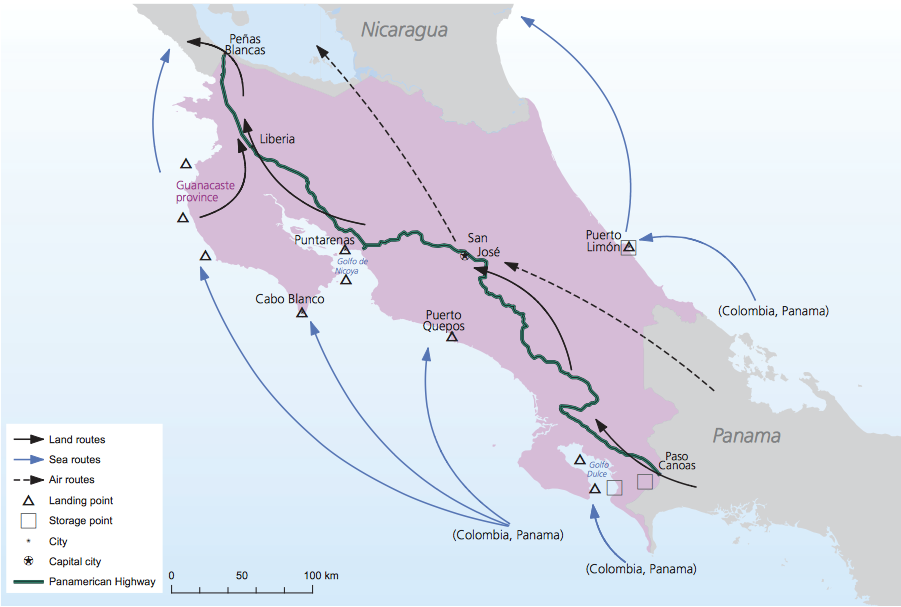Is it still safe to live in or visit Costa Rica?
In order to answer this question correctly and objectively, I need to put everything into its proper perspective.
During the 40 plus years that I have lived in Costa Rica it has been branded and to some extent labeled as a “tropical paradise.” Even the national motto, pura vida, reinforces this label.
This due to the fact that the country has been always known for its unparalleled natural beauty, pristine beaches, towering mountains, spectacular vistas and exotically abundant flora and fauna.
And yes, Costa Rica does offer a quality of life superior to most countries. There are more American residents living here per capita than any other country in the world. Indeed, they all can’t be wrong. There really has never been anything negative about the country in the international media due to its squeaky-clean image and impeccable reputation.
Unfortunately, Costa Rica has been in the news lately for all of the wrong reasons. The international media has become fixated on comparing county’s formerly unblemished image that is now slightly tarnished by an increased turf wars between local drug gangs and the resultant rise in homicides among said group.
The gangs are paid with drugs instead of money by the larger Mexican and Colombian drug cartels. All of the drugs that make their way to the country and that are consumed here come from Colombia. Due to its geographical location, Costa Rica is a natural transit point from which drugs are shipped easily to North America, Europe or other foreign destinations.
Really, no North Americans or Europeans have been adversely affected by the local gangs despite the alarmist rhetoric disseminated by the media. These gangs are just fighting among themselves.
Out of the 900 and so murders this year, 598 have been due to the rivalry between the local criminal groups which are fueled by the influence of the Mexican and Colombian cartels.
One only has to look at Mexico’s and Colombia’s violent pasts to see the situation in its proper light.
In Mexico during the last decade or so over two hundred reporters have been murdered in cold blood for trying to expose the drug gangs. This has never occurred in Costa Rica.
The cartels and drug trade fuel rampant corruption and violence in Mexico, contributing to tens of thousands of homicides in the country each year. Thousands of Mexicans—including politicians, students, and journalists—die in the conflict every year. The country has seen more than 360,000 homicides since 2006, when the government declared war on the cartels. Once again, previously unheard of here.

Despite this rampant violence, surprisingly Mexico is the top foreign destination for U.S. travelers and 1.6 million U.S. citizens who live there, and who are not deterred by the violent situation.
Now let’s look at Colombia. Unfortunately, the country has been at war with itself for 70 years. Over 200,000 citizens died due to political violence (called appropriately, la violencia) between 1950 and 1960 after a liberal presidential candidate was assassinated.
From 1960 to the present day, different guerrilla groups, drug cartels and paramilitary groups have been responsible for hundreds of thousands of more deaths. Many more Colombians have been displaced from their homes, especially in rural areas. Colombia has one of the largest internally displaced populations in the world, standing at 6.8 million at the end of 2022, with over 1 million new displacements since the signing of the ineffectual Peace Agreement in 2016.
In the 1990s the city of Medellín had a homicide rate of about 400 people per 100,000 residents, making it the most violent city in the world.
The drug trade and maladies are still plaguing the country. Extorsion, kidnapping, being the largest cocaine exporter in the world, murder by hit men riding motorcycles (called sicarios in Spanish), the usurious practice of loan sharking (gota a gota); which often brings with it a penalty of death when the borrower fails to pay on time, and the arbitrary charging of tolls to enter some neighborhoods are still widespread in Colombia.
Unfortunately, small-time criminal groups in Costa Rica have adopted the Colombian practices of drug smuggling and sales, and to a smaller extent loansharking and fighting for to control drug routes and territories. All of this was never a problem in the past.
Costa Rica has always been known as a peaceful country who abolished its miliary at the end of the 1940s. The innumerable bloodbaths, mass killings, and violence that have occurred in Mexico and Colombia have never happened in Costa Rica.
Tragically, there have been a few deaths here due to collateral damage in poorer Costa Rican neighborhoods.
Incidentally, there has never been an indiscriminate mass shooting in Costa Rica like those that occur almost every week in the United States. Gun laws are very strict. Legal foreign residents and Costa Rican citizens may only possess two handguns, but only after taking a psychological test and extensive criminal background check. Furthermore, civilians may not own military weapons like AK-47s.
In short, I would not live here if I felt the country was too dangerous. Tourists and potential retirees should feel the same way taking into account the information and facts mentioned above.



